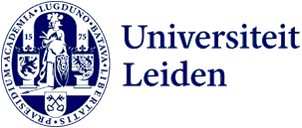Leiden Impact Matrix
To help you make the impact or valorisation of your scientific research more clearly apparent, we have created a Leiden Impact Matrix.
What is impact?
Your research is considered to have impact if it has added value for society or scientific development. Irrespective of your discipline, you and your research can have impact in many different ways. These could include:
- Publications
- Collaboration with external partners
- Advising the government or taking part in councils/advisory committees
- Lectures and media appearances
- Patents
- Spin-offs
The Leiden Impact Matrix lists many more examples of impact.
Leiden Impact Matrix
Whether you wish to assess the impact of your research before or after the completion of your project, the Leiden Impact Matrix is a useful tool and a source of inspiration. With this matrix, Leiden University wishes to articulate and exemplify the diversity of forms that impact can take in different academic fields and disciplines.
You can complete the matrix fields that are relevant to you and your research, and in this way clarify the results of your knowledge development, both quantitatively and qualitatively. This also allows you to demonstrate the gains of your research for society and scientific development. In other words it allows you to clarify the global impact of your research and teaching.
Leiden Impact Matrix: Academic field and professionals
Below is an overview of the impact of your research on the academic field and professionals:
| Interaction with ► | Academic field | Professionals |
|---|---|---|
| Outcomes ▼ | ||
| Results Knowledge production and exchange |
Outreach activities for/with peers:
|
Outreach activities for/with professionals:
|
|
Effects |
Use of research outcomes by peers
|
Use of research outcomes by professionals
|
|
Returns |
Marks of recognition from peers
Positions in rankings and EU networking activities and alliances External funding
|
Returns/gains through
|
Leiden Impact Matrix: Commercial and government sector and general audiences
Below is an overview of the impact of your research on the commercial and government sector and general audiences.
| Interaction with ► | Commercial and government sector |
General audiences |
|---|---|---|
| Outcomes ▼ | ||
| Results Knowledge production and exchange |
Outreach activities
|
Dissemination of
|
|
Effects |
Use of research outcomes
|
Use of research outcomes
|
|
Returns |
Returns/gains through:
|
Returns/gains through:
|
You can use the Leiden Impact Matrix to
- Write a knowledge valorisation section as part of a grant application (NWO, EU).
- Provide societal justification for ongoing or completed research to subsidy providers or collaboration partners.
- Prepare for GROW interviews in which you may be asked to demonstrate valorisation or impact results.
This matrix is also used by research units and faculties. Since 2015, institutes have been using the matrix in their self-assessments as part of external research assessments.
